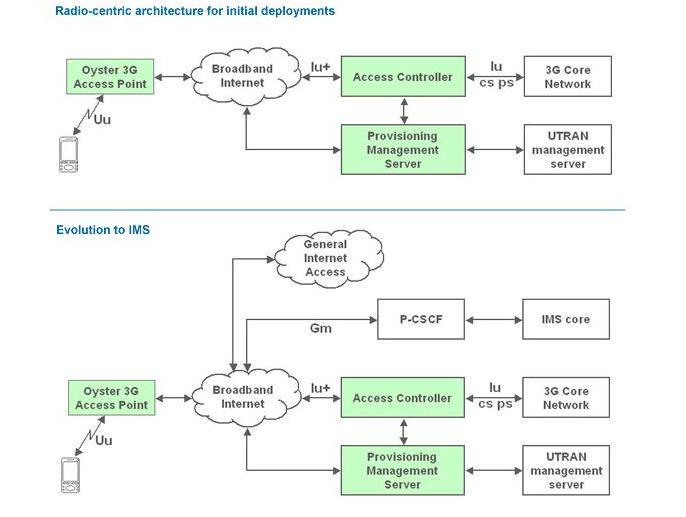Indoor 3G coverage on the way
Femtocell data calls likely to be offered free

A technology that offers 3G speeds to your mobile phone even when you're inside will be tested in the UK later this year.
The so-called femtocells - small 3G base stations that sit in your home - can improve 3G coverage to mobile phones when you're inside a building. At home you're often out of 'earshot' of standard 3G base stations, so 3G reception can be poor.
The femtocell radio base station sits in your house. It hooks up to your existing broadband connection to link calls and data services to and from a mobile phone. All that's needed to get femtocells working in your home is a broadband connection.
Demo deep down underground
UK firm IP.access , one of the many companies that makes femtocells, revealed the technology at a demo deep down in a London wine cellar on Friday afternoon. It showed how its Oyster 3G home access femtocell could transmit a video conference call between two mobile phones with minimal delay. Ten or so metres underground, there would not have been any 3G coverage without the femtocell base station.
IP.access said trials with 3G network operators were likely to begin before the end of the year, although no names involved in the forthcoming trials were mentioned. It's also working to include the technology in Wi-Fi gateways offered by broadband firms.
"Several of the big players, such as T-Mobile and Vodafone , have shown interest in femtocells," said Chris Cox, marketing manager at IP.access.
Competing with Wi-Fi
Cox added that the technology will compete with Wi-Fi services offered by mobile operators such as Orange , as well as the BT Fusion service. Calls made over a Wi-Fi hotspot use UMA (Unlicensed Mobile Access), which plugs into a home broadband connection, but links calls to a mobile phone account. The Wi-Fi services automatically switches to GSM when you move far enough from the Wi-Fi hotspot coverage.
Sign up for breaking news, reviews, opinion, top tech deals, and more.
"The advantage of femtocells, however, is that they can be used by any 3G mobile handset, where as only a few high-end models support UMA and Wi-Fi," Cox said. Femtocell services are likely to be subsidised or bundled in with service subscriptions from mobile operators. The cost is said to be around £60-70 per femtocell, but the "customer is not going to pay," according to IP.access.
Data calls to be offered free?
An improvement in quality traditionally means that data usage goes up, so operators will benefit from the service, Cox said. He added that he didn't think operators would charge for femtocell data calls.
ABI Research predicts around 52,000 femtocell units will ship this year, increasing to around 1 million in 2008 when deployments become more widespread. IDC believes that femtocell users will surpass the 5.7 million mark by 2011.
Analysts we spoke to at the IP.access demo agreed that femtocells are not likely to replace Wi-Fi.
"As some mobile operators have already made huge investments in Wi-Fi technology, I think the two will co-exist," said Joao da Silva, senior research analyst of European wireless and mobile communications at IDC .